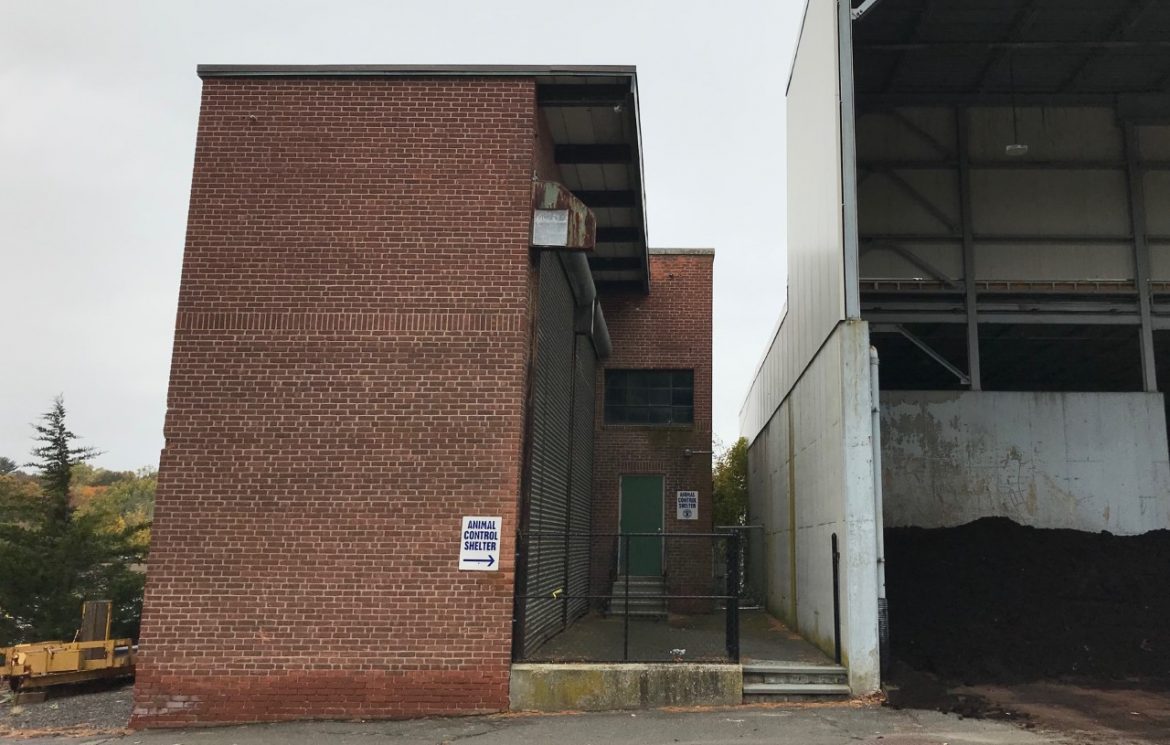Members of the Board of Selectmen on Tuesday voiced support for two different ways to move forward with the town’s Animal Control shelter, which long has been occupied in a former incinerator building at the dump.
That brick structure soon will need a new roof, which two officials say would cost about $75,000 to $80,000 to replace. Selectman Nick Williams raised the issue recently, calling for New Canaan to find better quarters for the lost or abandoned animals that end up in the shelter.
During the Board’s special meeting at Town Hall, Selectman Kit Devereaux said response to the issue has generated strong support from concerned residents, and that creation of a new shelter “would be a really great public-private partnership.”
“I want to know if there would be support for that,” Devereaux said.
Williams said he agreed, and that he received several calls and emails from residents who want to help.
“I definitely think we need to push this forward,” he said.
First Selectman Kevin Moynihan said he wanted to look into outsourcing the care of the roughly 50 to 60 animals—primarily dogs as well as cats—that end up in the shelter.
“I don’t know why we would not board them at a local veterinarian and then change owner of pet” for that expense, Moynihan said.
“Why incur the expense if we have a legitimate way to pass it on to the dog owner?” He said.
Devereaux called the number of animals that spend time at the shelter—a non-insulated building that is manned on a visit-only basis by the New Canaan Police Department and its Animal Control section officers—“significant.”
“I’d like to see what kind of support there would be in the community to making something that would work here,” Devereaux said of a possible public-private partnership.
A committee of the town two years ago concluded that the approximately 800-square-foot facility is “adequate, if basic” and that “a location that provided office space for the Control Officers, as well as an outdoor run, would be an improvement.” Officials have said the shelter is not designed for the long-term care of animals, though a local Girls Scouts Troop in recent years purchased a dryer and created a “meet-n-greet” pen out front. Two winters ago, a failed heat pump forced a temporary closure of the building.
Williams said the building itself will force the town to make a decision “because it needs to be taken down.”
Moynihan suggested that the building could end up as a storage space.
Williams noted that public works officials have said it needs a new roof.
“So why pay?” he said.
Moynihan said now that the matter has been raised, “I think we need to study it.”
“And I do want to study outsourcing, to see if other towns do it,” Moynihan said.
Williams said a town project funded by private money makes sense.
“We have had a great deal of success with public-private partnerships,” he said. “I think that should be one of the options. I’m not opposed to looking at outsourcing if that works better, but Kit rightly raises the point that there is a lot of support in the community to do something in town so we should look at that as an option as well.”

There are a lot of questions which remain to be answered on this issue, such as: What is the maximum number of animals the shelter has had in the past at a single time? Do local vets have capacity or willingness to take in the animals? Who pays the vets if the animals are abandoned without tags to identify the owner? Are there existing town-owned buildings where the shelter could be relocated? How much time is there before the shelter has to be moved due to structural problems (roof, etc.) at the current site?